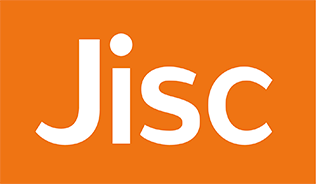Effects of Center Based vs. Telerehabilitation using an Interval and Continuous Aerobic Training among Post-Coronary Revascularization Patients-A Randomized Controlled Trial
Exercise in Post-Coronary Revascularization Patients
Keywords:
Aerobic Exercises, Cardiac Rehabilitation, Coronary Artery, Physical ActivityAbstract
Background: This investigation used continuous aerobic and high-intensity interval training to compare the differences between centre-based and telerehabilitation. This study seeks to identify the most efficient rehabilitation strategy positioned to empower patients on their path to recovery and well-being in the contemporary era of cardiac care.
Methodology: The study was a single-blinded, randomized controlled trial involving 80 patients who had undergone coronary revascularization procedures, were enrolled in the cardiac rehabilitation department, and were eligible for Phase-III CR. Patients were divided into Group A, receiving centre-based Continuous Moderate-Intensity Aerobic Exercise, 3–4 days a week, at 50%-70% of MHR. Group B received high-intensity interval-based training for 3–4 days and at four subsequent intervals. Telerehabilitation was conducted with Group C following the same protocol as Group A and Group D following the same protocol as Group B, while each group had n=20 participants.
Results: The within-group analysis showed significant improvements in the 6-Minute Walk Test (6MWT) and Self-reported Seven-Day Physical Activity Questionnaire (PAR) across all groups (p<0.001). Significant improvements in the Rate of Perceived Exertion (RPE) were found in Groups A and B (p<0.05). ANOVA results indicated that centre-based rehabilitation was significantly more effective than telerehabilitation in improving 6MWT and RPE scores (p<0.05).
Conclusion: Centre-based intervention is more effective than telerehabilitation in Phase-III Cardia Rehabilitation patients. However, high-intensity interval-based training was more effective in centre-based, while continuous moderate-intensity aerobic exercise was effective in telerehabilitation.
References
Campos HO, Rodrigues QT, Drummond LR, Lima PM, da Costa Monteiro M, Wanner SP, Coimbra CC. Exercise-based cardiac rehabilitation after myocardial revascularization: a systematic review and meta-analysis. Reviews in Cardiovascular Medicine. 2022 Feb 22;23(2):74.
Piccolo R, Bruzzese D, Mauro C, Aloia A, Baldi C, Boccalatte M, Bottiglieri G, Briguori C, Caiazzo G, Calabrò P, Cappelli-Bigazzi M. Population trends in rates of percutaneous coronary revascularization for acute coronary syndromes associated with the COVID-19 outbreak. Circulation. 2020 Jun 16;141(24):2035-7.
Alkhouli M, Alqahtani F, Kalra A, Gafoor S, Alhajji M, Alreshidan M, Holmes DR, Lerman A. Trends in characteristics and outcomes of hospital inpatients undergoing coronary revascularization in the United States, 2003-2016. JAMA network open. 2020 Feb 5;3(2):e1921326-.
Whitlock EL, Diaz-Ramirez LG, Smith AK, Boscardin WJ, Covinsky KE, Avidan MS, Glymour MM. Association of coronary artery bypass grafting vs percutaneous coronary intervention with memory decline in older adults undergoing coronary revascularization. Jama. 2021 May 18;325(19):1955-64.
Ganyukov V, Kochergin N, Shilov A, Tarasov R, Skupien J, Szot W, Kokov A, Popov V, Kozyrin K, Barbarash O, Barbarash L. Randomized clinical trial of surgical vs. percutaneous vs. hybrid revascularization in multivessel coronary artery disease: residual myocardial ischemia and clinical outcomes at one year—Hybrid Coronary Revascularization Versus Stenting or Surgery (HREVS). Journal of interventional cardiology. 2020 Jan 3;2020.
Gambassi BB, Almeida FD, Almeida AE, Ribeiro DA, Gomes RS, Chaves LF, Sousa TM, Nina VJ. Acute response to aerobic exercise on autonomic cardiac control of patients in phase III of a cardiovascular rehabilitation program following coronary artery bypass grafting. Brazilian journal of cardiovascular surgery. 2019 Jul 22;34:305-10.
Seguban JM, Amoloza-De Leon KG, Barrientos-Regala MA, Pipo MQ, Pestaño NS, Punzalan FE, Tumanan-Mendoza BA, Cas RR. Referral rate of admitted cardiovascular patients eligible for cardiac rehabilitation in a private level 3 general hospital: a three-year retrospective study. Cardiology and Cardiovascular Medicine. 2019;3(5):340-51.
Jegier A, Szalewska D, Mawlichanow A, Bednarczyk T, Eysymontt Z, Gałaszek M, Mamcarz A, Mierzyńska A, Piotrowicz E, Piotrowicz R, Smarż K. Comprehensive cardiac rehabilitation as the keystone in the secondary prevention of cardiovascular disease. Kardiologia Polska (Polish Heart Journal). 2021;79(7-8):901-16.
Scherrenberg M, Janssen J, Lauwers A, Schreurs I, Swinnen M, Dendale P. Is there an optimal dose of cardiac rehabilitation in coronary artery disease patients?. International Journal of Cardiology. 2021 May 1;330:7-11.
Pakrad F, Ahmadi F, Grace SL, Oshvandi K, Kazemnejad A. Traditional vs extended hybrid cardiac rehabilitation based on the continuous care model for patients who have undergone coronary artery bypass surgery in a middle-income country: A randomized controlled trial. Archives of Physical Medicine and Rehabilitation. 2021 Nov 1;102(11):2091-101.
Redfern J, Gallagher R, O’Neil A, Grace SL, Bauman A, Jennings G, Brieger D, Briffa T. Historical context of cardiac rehabilitation: learning from the past to move to the future. Frontiers in cardiovascular medicine. 2022 Apr 27;9:842567.
Harrison AS, Gaskins NJ, Connell LA, Doherty P. Factors influencing the uptake of cardiac rehabilitation by cardiac patients with a comorbidity of stroke. IJC Heart & Vasculature. 2020 Apr 1;27:100471.
Jóźwik S, Cieślik B, Gajda R, Szczepańska-Gieracha J. Evaluation of the impact of virtual reality-enhanced cardiac rehabilitation on depressive and anxiety symptoms in patients with coronary artery disease: a randomised controlled trial. Journal of clinical medicine. 2021 May 16;10(10):2148.
Grochulska A, Glowinski S, Bryndal A. Cardiac rehabilitation and physical performance in patients after myocardial infarction: Preliminary research. Journal of Clinical Medicine. 2021 May 22;10(11):2253.
Hansen D, Abreu A, Ambrosetti M, Cornelissen V, Gevaert A, Kemps H, Laukkanen JA, Pedretti R, Simonenko M, Wilhelm M, Davos CH. Exercise intensity assessment and prescription in cardiovascular rehabilitation and beyond: why and how: a position statement from the Secondary Prevention and Rehabilitation Section of the European Association of Preventive Cardiology. European journal of preventive cardiology. 2022 Jan 1;29(1):230-45.
Flora S, Marques A, Hipólito N, Morais N, Silva CG, Januário F, Rodrigues F, Carreira BP, Cruz J. Test-retest reliability, agreement and construct validity of the International Physical Activity Questionnaire short-form (IPAQ-sf) in people with COPD. Respiratory Medicine. 2023 Jan 1;206:107087.
Prabhu NV, Maiya AG, Prabhu NS. Impact of cardiac rehabilitation on functional capacity and physical activity after coronary revascularization: a scientific review. Cardiology research and practice. 2020 Mar 21;2020.
Fanget M, Bayle M, Labeix P, Roche F, Hupin D. Effects of cardiac telerehabilitation during COVID-19 on cardiorespiratory capacities in patients with coronary artery disease. Frontiers in Physiology. 2022 Mar 17;13:341.
Zhong W, Fu C, Xu L, Sun X, Wang S, He C, Wei Q. Effects of home-based cardiac telerehabilitation programs in patients undergoing percutaneous coronary intervention: a systematic review and meta-analysis. BMC Cardiovascular Disorders. 2023 Feb 22;23(1):101.

Downloads
Published
Issue
Section
License
Copyright (c) 2024 Fatima Zehra, Muhammad Usman Khan, Sanaullah Junejo, Ammanullah Khan, Sabrina Memon

This work is licensed under a Creative Commons Attribution-NonCommercial 4.0 International License.













